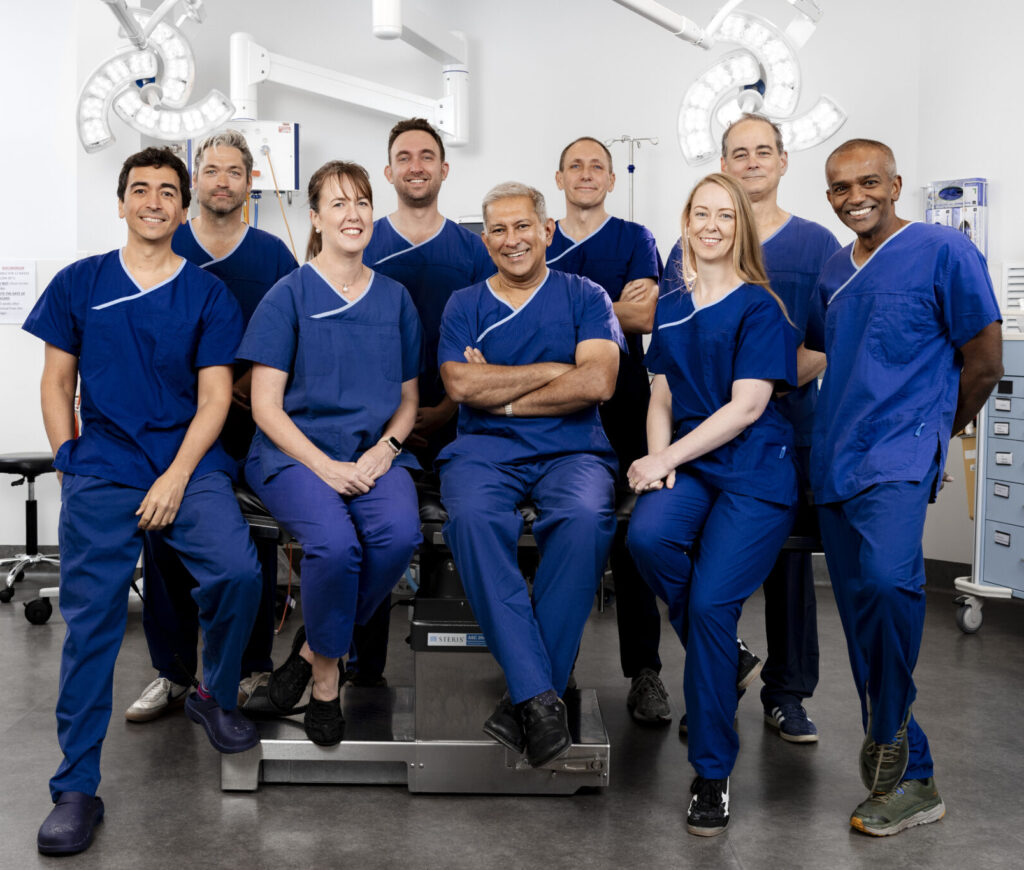Otoplasty (Ear Correction)
Contents
What is an otoplasty?
Otoplasty, also referred to as ear correction surgery, is a surgical procedure performed by our Specialist Plastic Surgeons in Perth aimed at setting back prominent ears, by changing the angle and shape to bring them closer to the head. The procedure can also assist with ears that are uneven in shape (asymmetrical).
This procedure is conducted for either aesthetic (cosmetic) purposes or medical/functional reasons, with the latter being subject to specific Medicare eligibility criteria. As of 1 November 2018, Medicare categorises this procedure solely as aesthetic (cosmetic) for patients aged 18 years and above.
What factors may influence the consideration of otoplasty surgery?
The procedure is typically recommended for individuals aged six years and above. This timeframe aligns with the stage when a child is preparing to enter primary school, as they may experience self-consciousness and social withdrawal due to perceived differences from their peers. The child’s ear cartilage is also soft and easy to mould.
Additionally, it may also be performed on adults however, the firmer cartilage of fully formed ears does not allow the same degree of moulding.
Is an otoplasty right for me?
When considering otoplasty surgery for your child or yourself, it is crucial to schedule a consultation with a Specialist Plastic Surgeon. This initial step ensures open communication about your appearance goals and expectations. Your surgeon will conduct a comprehensive examination and attentively listen to and address your concerns. They will then discuss the most appropriate options for your individual circumstances.
While some individuals may experience self-consciousness due to prominent ears and find ways to cope, others may require additional assistance to fully benefit from this surgery. It is important to have a detailed discussion with your surgeon about any anxieties you or your child may have about their ears, both during childhood and into adulthood.
How is otoplasty surgery performed?
The surgical technique for otoplasty surgery may differ based on individual patient characteristics and your surgeon’s specific methods. The primary goal is to remould the cartilage to create a more defined fold in its central portion. During the procedure, a meticulous approach is taken wherein a small amount of skin is carefully excised from behind the ear. Additionally, selective folding or removal of a portion of the cartilage is performed. The natural curvature of the ear is preserved, allowing it to conform to the side of the head.
The surgery is performed in Perth in a fully-accredited hospital. The surgery can be performed under general anaesthesia as a day procedure or alternatively with a short hospital stay, depending on your general health and the extent of the procedure. The procedure takes about 1 hour.
Are there any risks and complications of otoplasty surgery?
All plastic, cosmetic and reconstructive surgical procedures come with risks and potential complications. To ensure successful surgery, it is crucial to understand and minimise these risks. Whilst all measures are taken to mitigate risks, some risks are unavoidable.
All information on this page is general in nature – your Specialist Plastic Surgeon will discuss the specific risks and complications pertinent to your individual surgical procedure during your consultation. General risks for surgery are listed here.
Specific risks related to otoplasty surgery include, but are not limited to:
- Asymmetrical ears: In some cases, the ears may not be perfectly symmetrical after surgery. This may require further surgery to correct.
- Re-protrusion of the ears: The ears may protrude again after surgery. This may also require further surgery.
- Nausea and loss of balance: Fluid accumulation within the inner ear can cause nausea and loss of balance. This is usually temporary, but it can be severe in some cases.
- Temporary or permanent loss of sensation: The skin around the surgical site and the surface of the ear may lose sensation temporarily or permanently.
- Ulcer formation: Small areas of skin overlying the cartilage of the ear may die, resulting in the formation of an ulcer. This may take several weeks to heal.
Although no major complications are expected with ear correction surgery, bleeding and bruising may occur. Occasionally, a set back ear may protrude again, necessitating a second procedure. You should follow your surgeon’s advice carefully to reduce the risk of complications. It is unrealistic to expect perfect symmetry between the two sides.
Will otoplasty surgery leave any scars?
Although your surgeon will make every effort to keep them as inconspicuous as possible, scars are the inevitable result of any surgery. The scars from otoplasty surgery are usually located behind the ears, where they are not easily visible. In some cases, the surgeon may make incisions within the inner creases of the ears. The scars are typically permanent, but they will fade over time and become less noticeable. Some patients have a tendency to develop keloid or hypertrophic scars and you should advise your surgeon if you are aware of this tendency in yourself.
What results can I expect from an otoplasty?
The primary objective of otoplasty surgery is to reduce prominence of the ears and/or improve symmetry of the ears to achieve overall better facial proportion. Please keep in mind that achieving perfect symmetry may not be possible as natural facial features often have slight variations between the two sides.
When can I resume normal activities following an otoplasty?
Most patients typically return to school or work within one week. However, it is recommended to refrain from engaging in strenuous physical activities for a period of three weeks. As part of the recovery process, patients are provided with a head bandage that should be worn for approximately one week. Additionally, in some cases, it may be advisable to wear the bandages at night for an additional two weeks.
It is important to emphasise that every patient’s recovery process requires sufficient time, support, and appropriate postoperative care. Healing abilities and pain tolerance may vary among individuals, leading to differences in the duration of recovery and the ability to participate in various activities.
How much does this procedure cost?
Please contact us online or call us on (08) 9380 0333 and one of our medical secretaries can provide you with more information. Please note that pricing does vary from case to case.
Where can I find more information?
The Australian Society of Plastic Surgeons (ASPS) website is a helpful and reliable source of information online. Their website is an excellent place to research a range of surgical procedures and non-surgical treatments, and view video animations.









